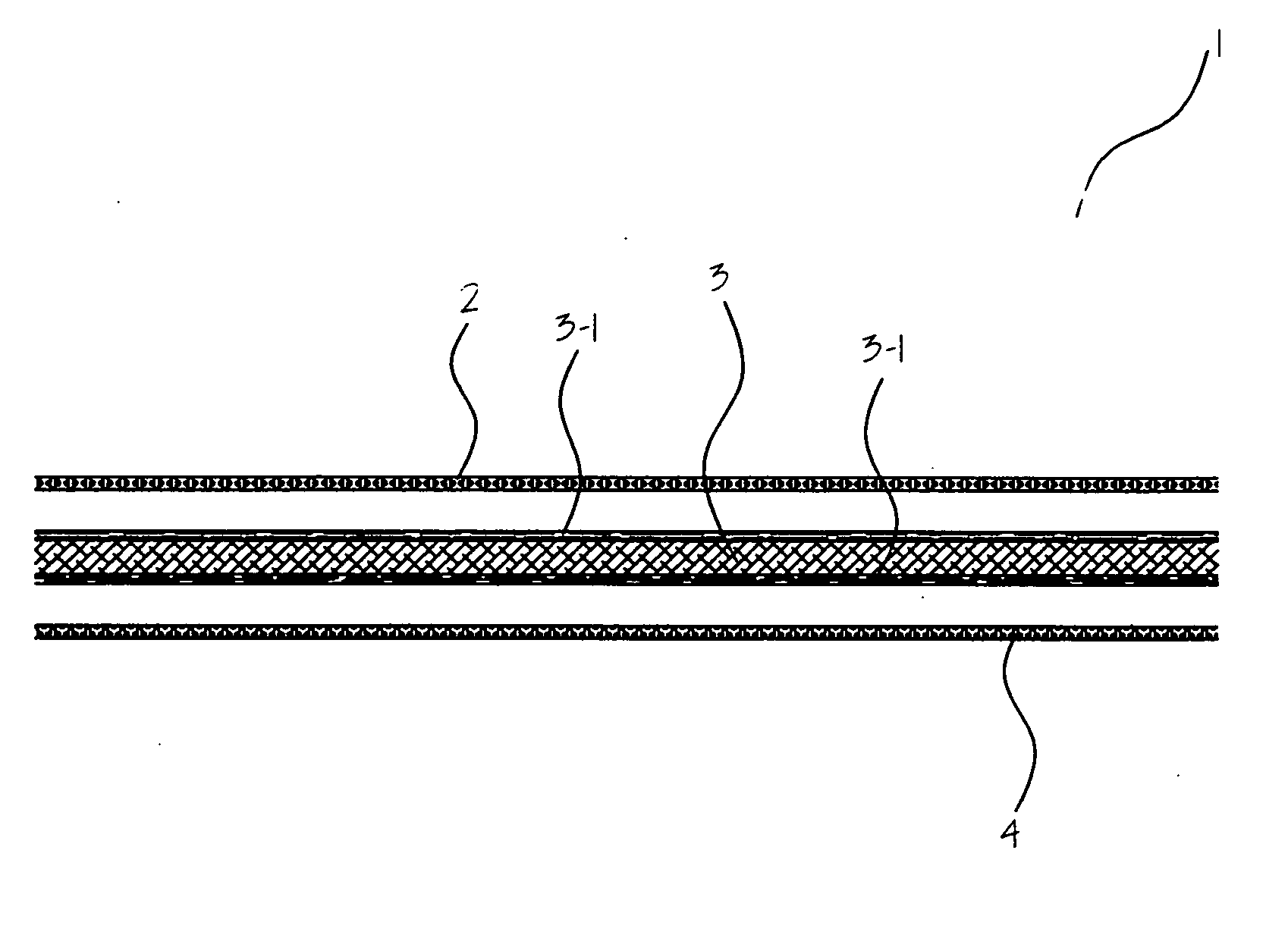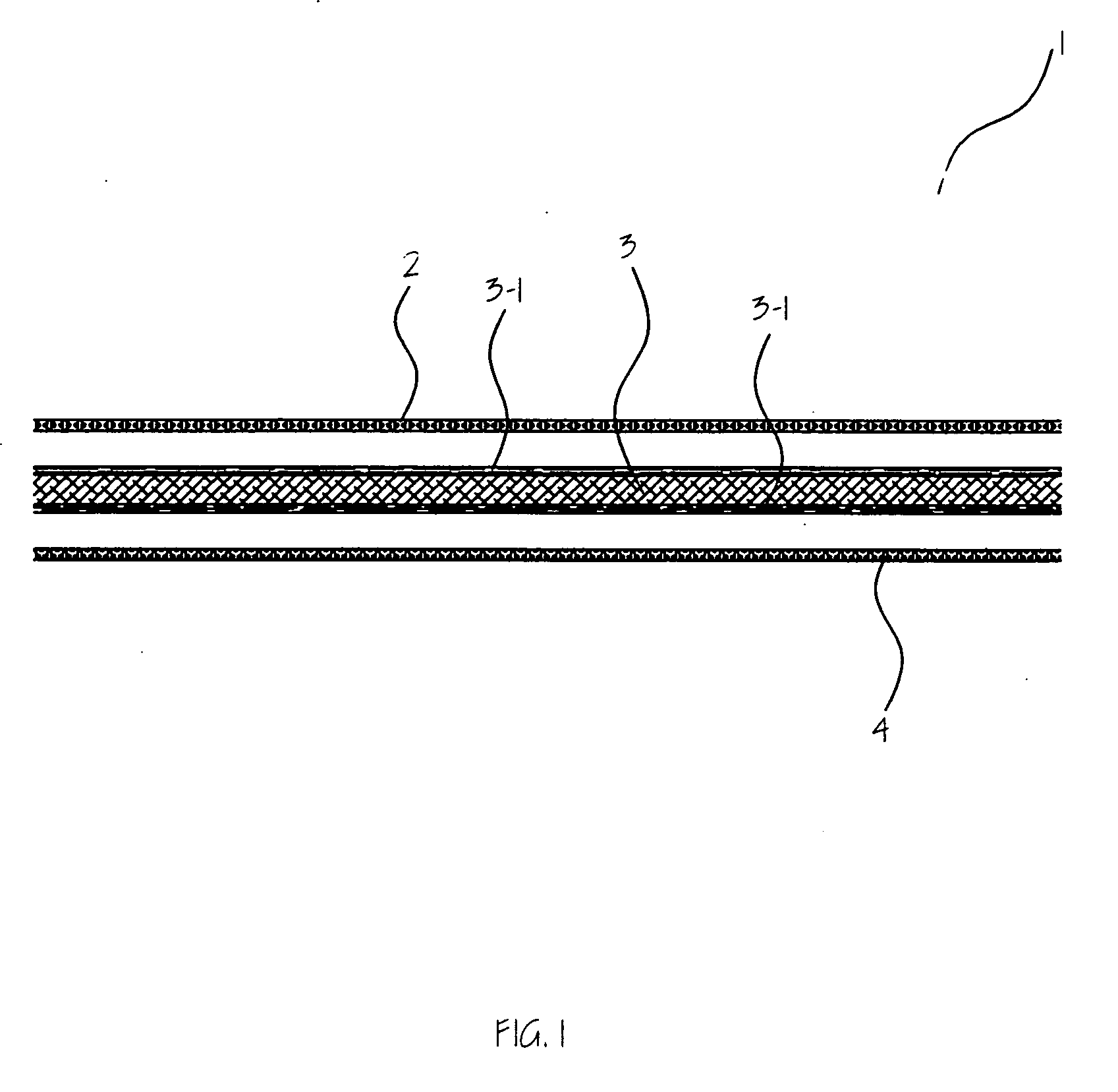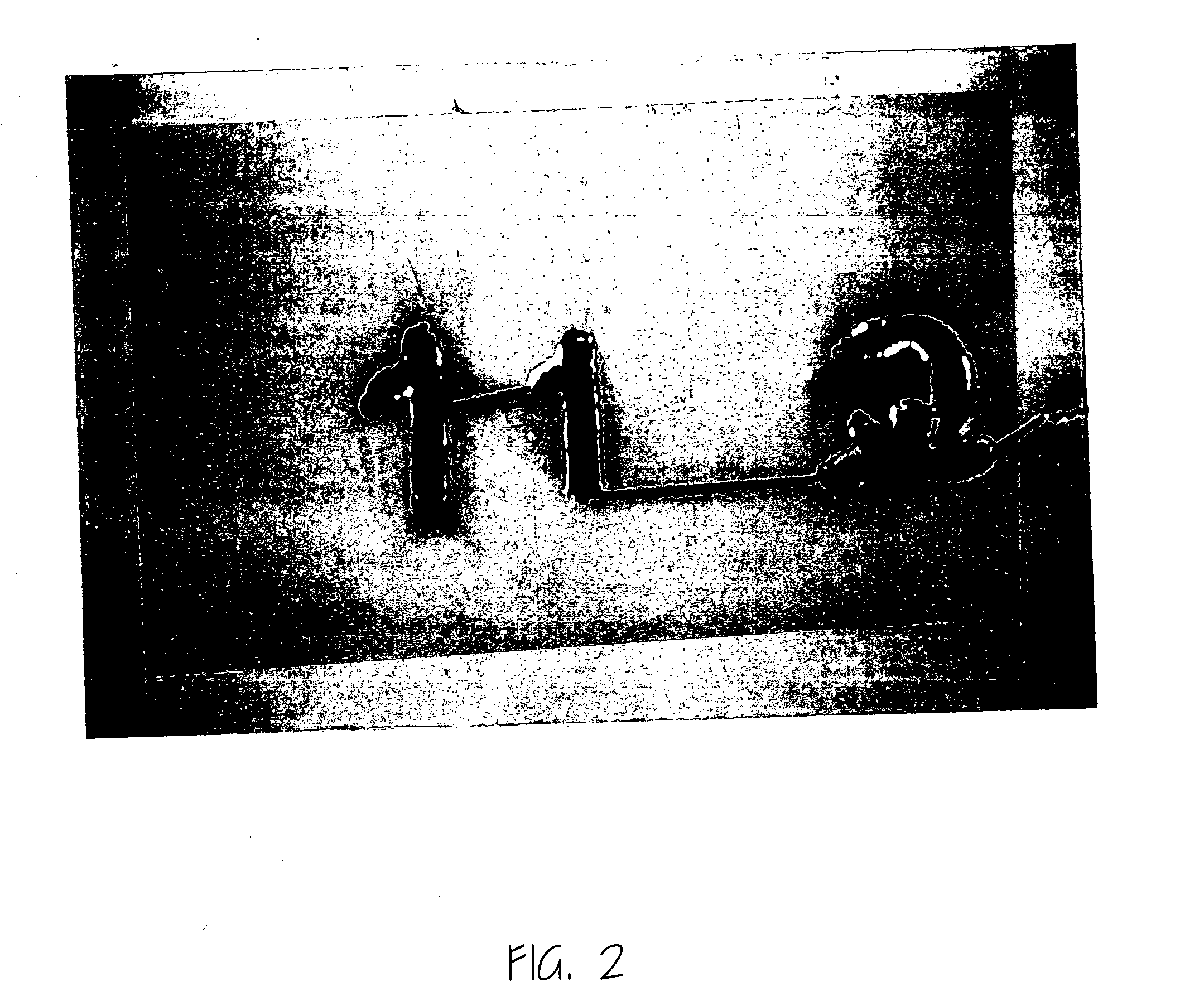Composite paper for embroidering, printing, foil coating and embossing on a same surface
- Summary
- Abstract
- Description
- Claims
- Application Information
AI Technical Summary
Benefits of technology
Problems solved by technology
Method used
Image
Examples
Embodiment Construction
[0020]FIG. 1 is a cross-sectional view of the composite paper (1) of the current application. The composite paper (1) comprised of a top layer (2) of printable paper of color copy paper from Corporate Office product number 1058A, a middle layer (3) of machine cut non-woven polyester felt, coated with anhydrous thermoplastic glue (3-1), from Kunin Rainbow™, and a bottom layer (4) of the same copy paper used for the top layer (2). The three layers of materials are overlapped and pressed up to 1.5 atm at 150° C. for 5 sec to form a composite paper. The plastic glue on the non-woven polyester felt adheres the felt and the papers on both sides strongly. The polyester felt structure renders tear resistance to the adhered papers on both sides thereof.
[0021] The strong point of the composite paper of the current application is that embroidering thereon is as easy as conventional fabrics.
[0022]FIG. 2 is a photograph of a conventional card paper of 0.3 mm thickness embroidered with threads....
PUM
| Property | Measurement | Unit |
|---|---|---|
| Temperature | aaaaa | aaaaa |
| Time | aaaaa | aaaaa |
| Pressure | aaaaa | aaaaa |
Abstract
Description
Claims
Application Information
 Login to View More
Login to View More - R&D
- Intellectual Property
- Life Sciences
- Materials
- Tech Scout
- Unparalleled Data Quality
- Higher Quality Content
- 60% Fewer Hallucinations
Browse by: Latest US Patents, China's latest patents, Technical Efficacy Thesaurus, Application Domain, Technology Topic, Popular Technical Reports.
© 2025 PatSnap. All rights reserved.Legal|Privacy policy|Modern Slavery Act Transparency Statement|Sitemap|About US| Contact US: help@patsnap.com



